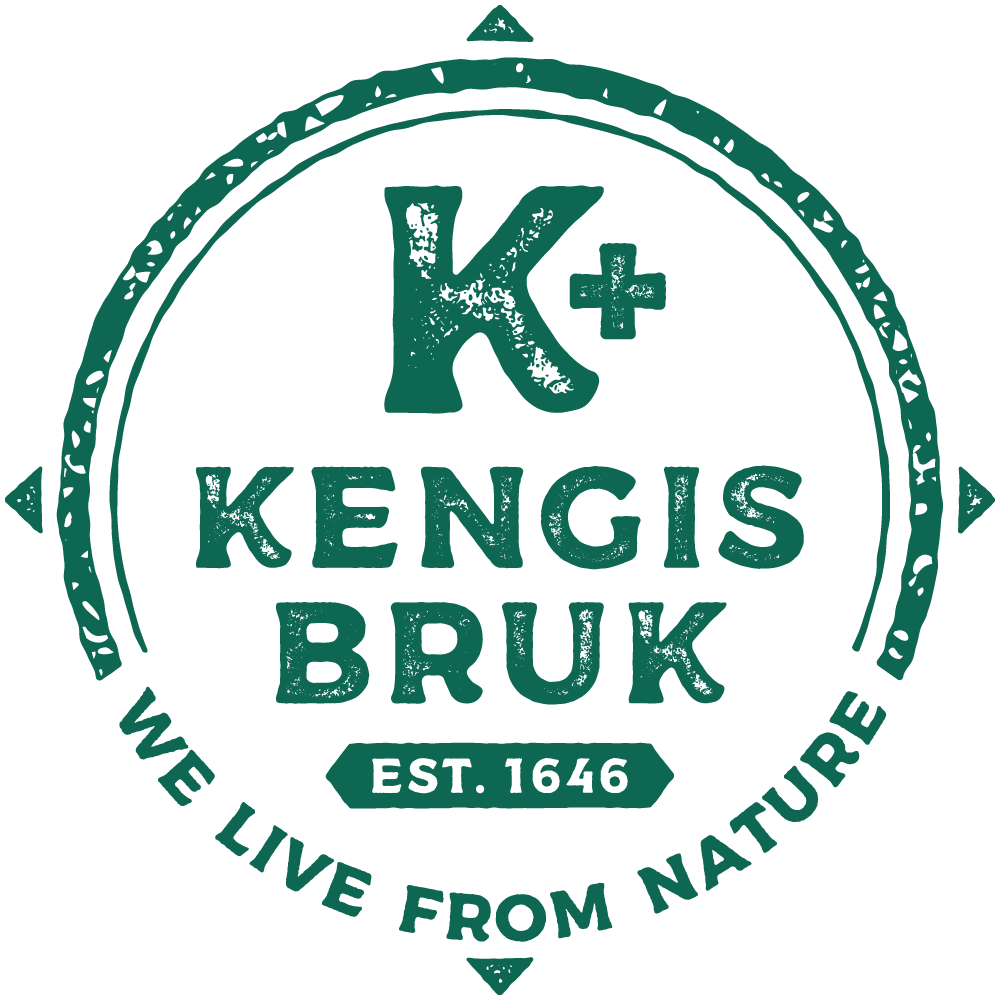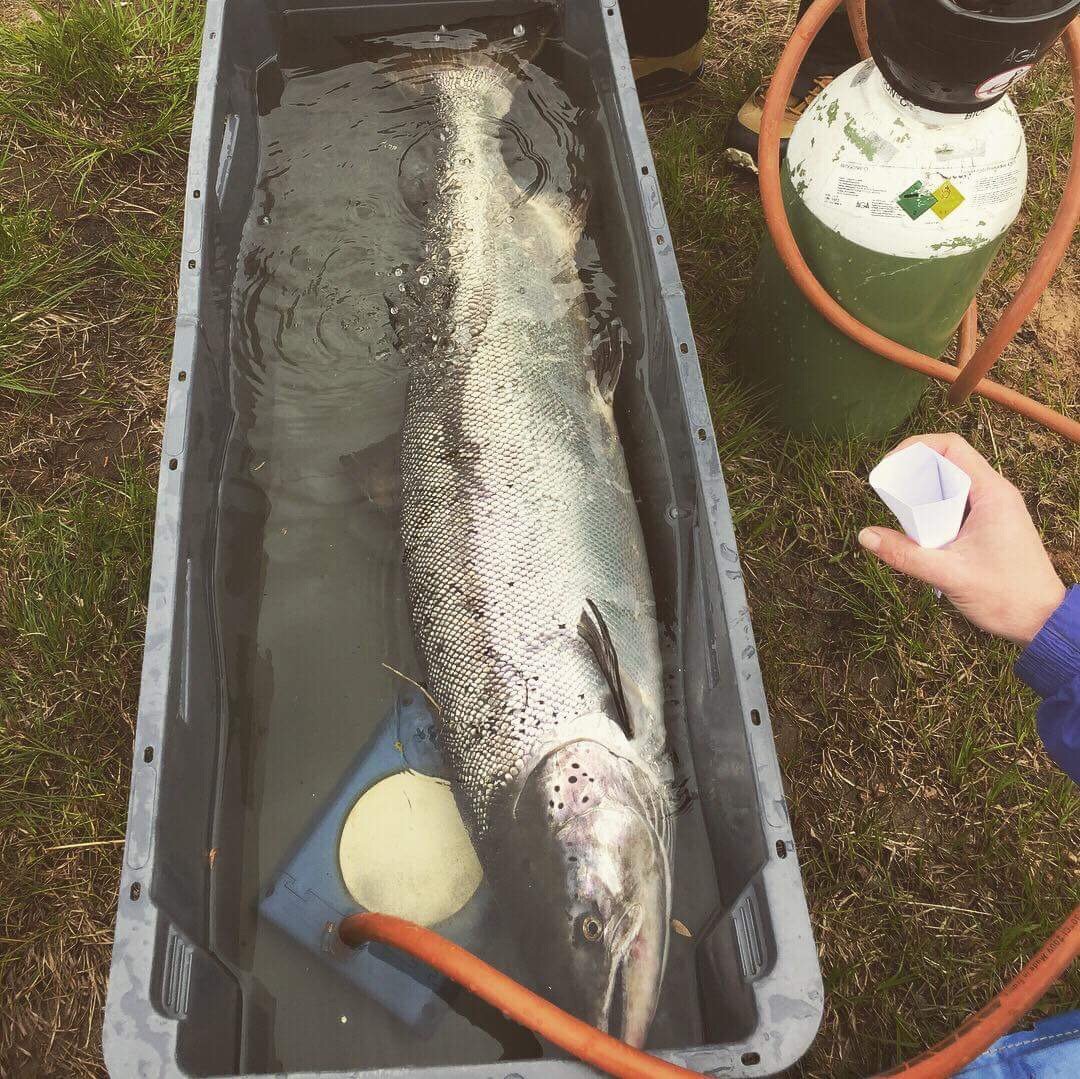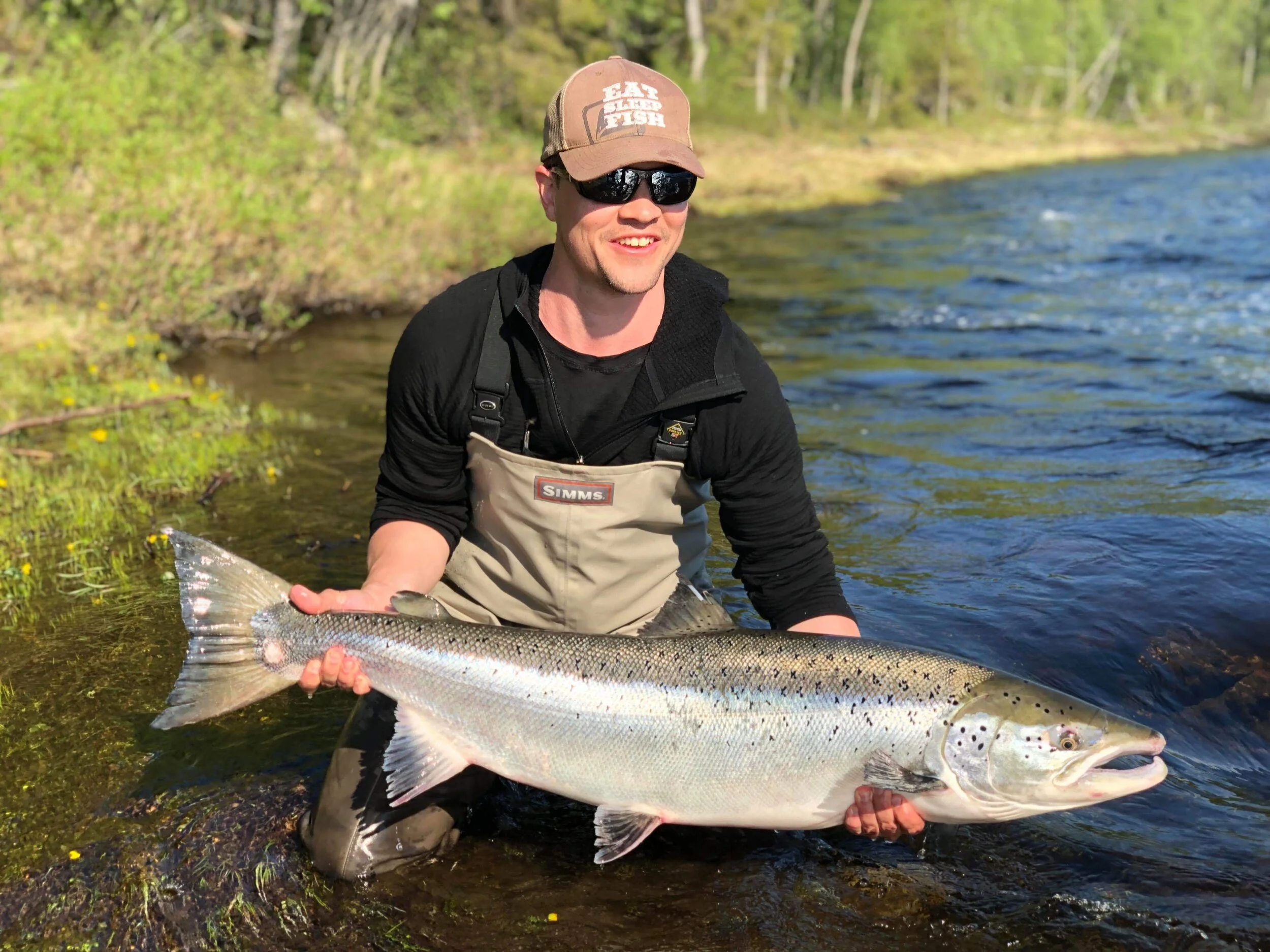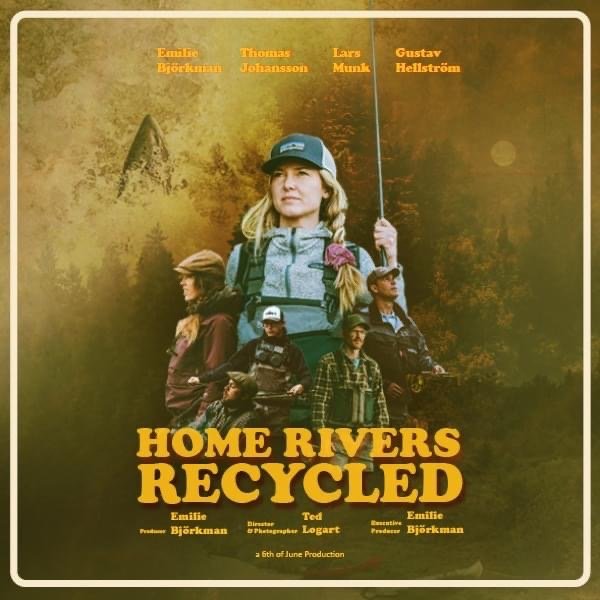Thoughts about the Baltic salmon and Kengis Bruk
In this blog we will dive into thoughts about the Baltic salmon and our mighty Torne River. It might be a bit nerdy, but we hope you enjoy it.
One thing is for sure when we talk about the Baltic salmon and Kengis Bruk, we don’t know everything about our loved salmon.
In general the Torne river system is big and long and there are many factors that can be a part of the run of salmon year after year.
Kengis Bruk is located just upstream the junction between Munio and the part of the river that is the border between Finland and Sweden, so when the baltic salmon hits that part of the river, some goes upstream Munio and some to the Swedish part of Torne river. We are guessing that it is a 50/50 split between the rivers.
Over the past years with catch reports and control over the fishing at Kengis we have learned that there is never an answer. Some years we have had many fish in the river, but the catch rate has been lower than years with less fish in the river.
All in all it comes down to the experience and the dream about the big Baltic salmon. That is what drives us forward and why we are in the river day after day, year after year and still dreaming about the big fish.
In order to learn more about the river system and to help our salmon we are a part of the foundation of baltic salmon rivers. We work together with biologists to learn more about the salmon and to learn about what we can do for the Baltic salmon.
We have been a part of a cross border tagging project that operated a small radio transmitter in the salmon to learn more about their journey and we will continue to do what we can to help the baltic salmon.
What can you do by the river?
If your dreams come true and you hook a baltic salmon there are some small tips you can use to help the salmon in the best way.
Fight it hard and as fast as possible
Use net to land the fish (Remember to get the net wet before you land the fish)
Keep the fish in the net while you get ready for a picture
Make sure not to lift the salmon on the organs ( A hand on the tail and just behind the head at the two fins)
Be fast with the camera
When you release it, make sure to hold the head upstream and wait for the fish to recover and give you the sign that it is ready to go
With a safe and fast catch and release we help the Baltic salmon survive and we give something back to nature.
Foundation of the Baltic rivers (Östersjölaxälvar i samverkan)
If you want to know more about the Foundation of the Baltic rivers, please visit their website. Here you can read more about the work they do.
Link.
These are the five goals of the Foundation;
ECOLOGY
Each individual river that is- or has been, home to wild salmon and sea-trout shall be restored so that it can produce its maximum number of smolt. The goals of the European Union’s water framework directive as well as Swedish national water quality goals shall, without exception, be met and adhered to.
PRODUCTION
Each individual river that contains wild salmon or sea-trout shall be given a specific goal for numbers of returning spawning fish. This goal will be at such a level so each river can produce 100% of its potential smolt-production. This will allow for a limited harvest while ensuring the future survival and conservation of each genetically unique stock.
MANAGEMENT
Salmon and sea-trout shall be managed both in river and sea so as to ensure that each river-specific objective is met.
ECONOMY
Salmon and sea-trout shall be utilized so as to achieve maximum economic value, thus promoting the development of sport fishing in Rivers and at Sea, and so as to increase the recreational value of the sport fishery.
FISHING RESTRICTIONS
All fishing with commercial fishing methods on mixed salmon stocks shall be prohibited where there is a risk for the catch of weak stocks. Commercial fishing should be aimed towards the catch of compensatory released salmon and sea-trout, or from strong wild river stocks. To ensure a high survival rate when releasing fish new low-impact and selective fishing gears and methods should be developed.
Report from Torne River
If you are really good in Finnish you can read this report about the economics around Torne river and wildlife tourism.
Just to give a little summary from the report is to tell us that each year the river generates around 10,8 million € from fishing tourism. It creates 35 full time employees pr. year and up to 140 seasonal employees. According to the report a Baltic salmon is worth 214€ pr. kg if caught by a sportfisher and with an average weight of 6 kg it makes every single fish worth 1320 €. Imagine a value you return to the river after you have been in contact with a baltic salmon.
Then catch & release is a good business for the area and the river. You give something back to the river, help the local society and give the salmon a chance to reproduce.
Home rivers recycled
Last but not least our friends Emilie, Lars & Ted have made a fantastic film talking about the life of a salmon fisher and there are some important parts about the river maintenance and biology in the film as well.
Thank you all for following us in our dream of the big Baltic salmon!
Aslak Lund
Photos: Ted Logardt, Marko Aronen, SVT, Wollmars Jakt & Fiske & Luke








